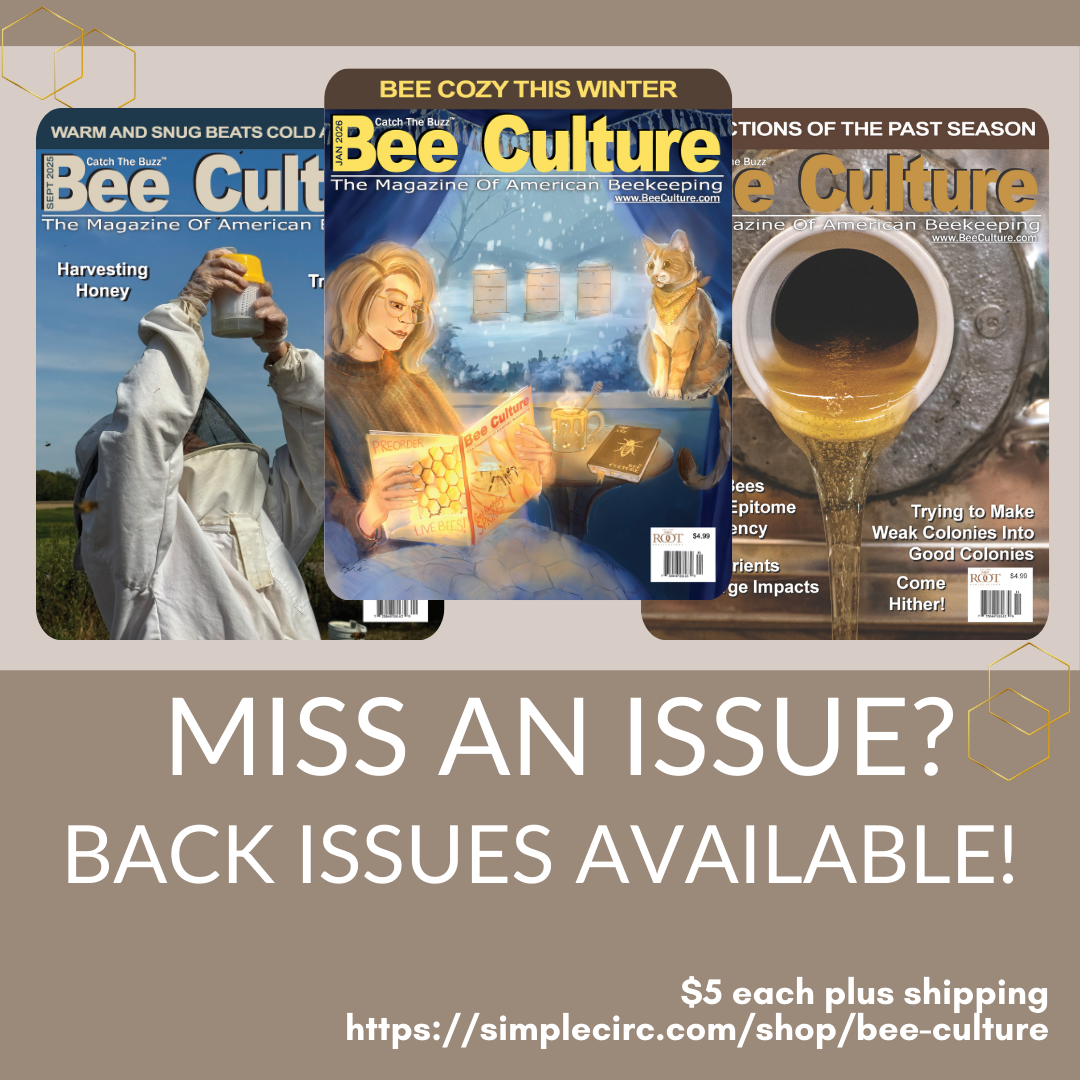By Jay Evans
Can Propolis Be Used To Improve Colony Health
Having visited Brother Adam’s apiaries at Buckfast Abbey and his honey sites in lonely Dartmoor, I was struck by how orderly and thoughtful the setting was, a truly meditative place to breed a holistic bee. Brother Adam applied the science of the time and a healthy travel budget to do just that. One thing he thought bees could do without was propolis (plant resins laboriously collected by worker bees, stripped from their bodies, and applied to hive surfaces). Despite increased interest in the benefits of propolis for human health in the first half of the 1900s, the concept that collected plant resins could aid bees was lost on Brother Adam. Instead, he saw the down-side for beekeepers dealing with hesitant removable frames and consequently sought breeding stock that left plant resins to the plants.
Coincidentally, just before Brother Adam returned to Buckfast Abbey with Anatolian bees from North Africa that would erase the desire of his breed for propolis, P. Lavie in France showed that propolis had antimicrobial properties against the causative agent for American foulbrood, and thereby might be of benefit to bees. Lavie’s work set off several decades of work, continuing now, aimed at characterizing specific propolis sources and specific bee diseases these sources might impact. More generally, propolis is one of many plant-derived substances that can impact bee health directly as antibiotics and indirectly by improving bee immune responses. Silvio Erler and Robin Moritz in Halle, Germany, have nicely summarized decades of experiments focused on determining the impacts of propolis and a wide pharmacopeia of bee-collected products on honey bee health (https://link.springer.com/article/10.1007/s13592-015-0400-z).
While health benefits to bees from propolis are evident from controlled experiments in the laboratory, studies of longterm effects on colony health are scarce. In one such study, Renata Borba and colleagues at the University of Minnesota placed commercial propolis traps into twelve experimental colonies, greatly increasing propolis levels in these colonies when compared to control colonies housed in standard hive bodies (http://jeb.biologists.org/content/jexbio/218/22/3689.full.pdf). These researchers then measured both disease loads and colony health across a full year. This experiment was repeated in consecutive years, involving a total of 24 experimental and 24 control colonies. In the first series, propolis-rich colonies survived better across Winter and carried more brood when sampled the following Spring. These colonies also invested less in six proteins known to be involved in the bee immune response during their first Summer and Fall, arguably conserving energy and resources. In the second round, propolis-rich bees showed reduced expression for only two of these six immune proteins, and no differences were found in either production or colony survivorship. Interestingly, bees in propolis-rich colonies showed much less variation for immune gene activity when compared to control bees, a result that might indicate a more uniform disease threat in these colonies, a good sign for bees threatened by a major colony-level disease breakout. Perhaps in support of this, nosema loads were lower in propolis-rich colonies, albeit with marginal statistical confidence.
More recently, Nora Drescher and colleagues in Germany and Switzerland conducted an even more aggressive experimental manipulation of the propolis envelope (http://www.mdpi.com/2075-4450/8/1/15). As in the prior study, they installed commercial propolis traps in colonies. In half of these colonies, traps were removed frequently, scraping propolis and delivering it to one of the propolis-rich colonies. They also scraped the naturally stored propolis from the propolis-poor colonies, increasing the differences between each set of colonies. They then assessed disease levels and colony health monthly across a single growing season in a total of 10 colonies. By the end of these assessments, propolis-rich colonies showed improved colony strength.
Neither study showed a significant effect of propolis on colony mite levels or on total virus or bacterial loads, in contrast to controlled lab studies. Interestingly, Drescher and colleagues showed that Deformed wing virus levels did not increase in step with their mite vectors in propolis-rich colonies, a hint that bees were in fact better able to fight off this virus. Finally, Borba and colleagues found differences in antibacterial activity when Paenibacillus larvae was exposed to propolis collected from colonies in the spring versus fall. Assuming both sets of propolis were derived from the same plant source, this result suggests that the benefits of propolis decrease in colonies over time.
These results indicate that the benefits of propolis can indeed outweigh the nuisance of sticky hive components. Natural propolis collected from multiple sources on two different continents was shown to lead to improved colony health and survival. It is exciting to think of the diversity of plant resins to which bees are exposed when collecting and unloading propolis. Surely, the observed antimicrobial traits seen in lab studies for distinct propolis sources can lead to natural or synthetic medicines for bees. Time will tell if beekeepers and scientists are better than bees in selecting specific plant medicines that consistently improve bee health.











